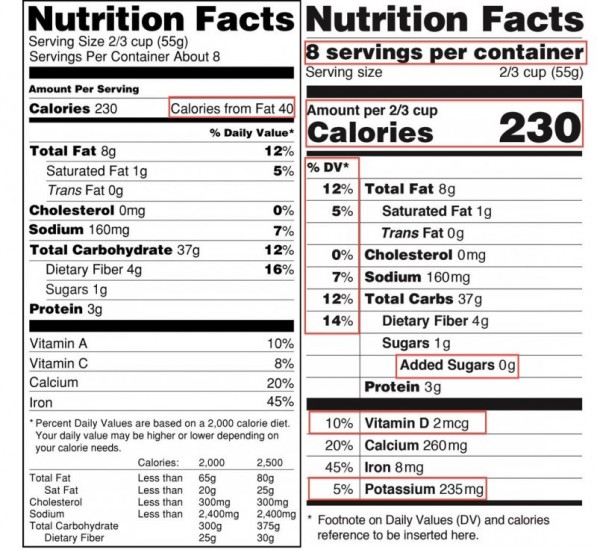If you’ve ever stopped to read the nutrition label after consuming half a bag of tortilla chips with salsa, you may have found yourself confused. What does three serving sizes mean? Like the recent Leo’s campaign, the FDA is saying “We’ve heard you.”
A couple days ago, the FDA announced its proposal to revamp their nutritional labels so that they reflect what the actual American consumes. No longer can we convince ourselves that only 25 calories from fat means that eating a whole pint of Ben & Jerry’s Half Baked ice cream is not THAT bad for us. These new regulations will mark the first major change to nutrition labels in their 20-year history.
The new labeling will be more consistent with the amount of calories that the average American person eats now, making calorie counting simpler – or more terrifying, you decide. For instance, a serving size of ice cream is proposed to increase from a half a cup to one cup. The whole 20-ounce soda bottle will equal one serving size instead of the previous 2.5 ounces. In a press release a couple weeks ago, Mrs. Obama said, “Our guiding principle here is very simple: that you as a parent and a consumer should be able to walk into your local grocery store, pick up an item off the shelf, and be able to tell whether it’s good for your family.”

Courtesy of businessinsider.com
Here is a list of other proposed changes the FDA plans to make in order to clarify what’s actually in the food we eat:
1. The FDA will require information about added sugars. This change is meant to indicate to consumers how much naturally occurring sugars and processed added sugars are in a food.
2. They plan to remove “Calories from Fat,” claiming that the type of fat is more important than the amount of it.
3. They propose to make certain elements like calories, serving sizes, and daily values more prominent on the label.
4. The new labels will require that information about nutrients like potassium and vitamin D are made more visible because they are considered new nutrients of “public health significance.” Low amounts of potassium and vitamin D can put people at risk for osteoporosis and high blood pressure. The FDA is still months away from implementing these new labels on shelves as the new labels still need to go through a 90-day public approval process. But these are important changes that reflect how our country views nutrition, and we need to make sure we follow this process so that we can be more informed shoppers.

